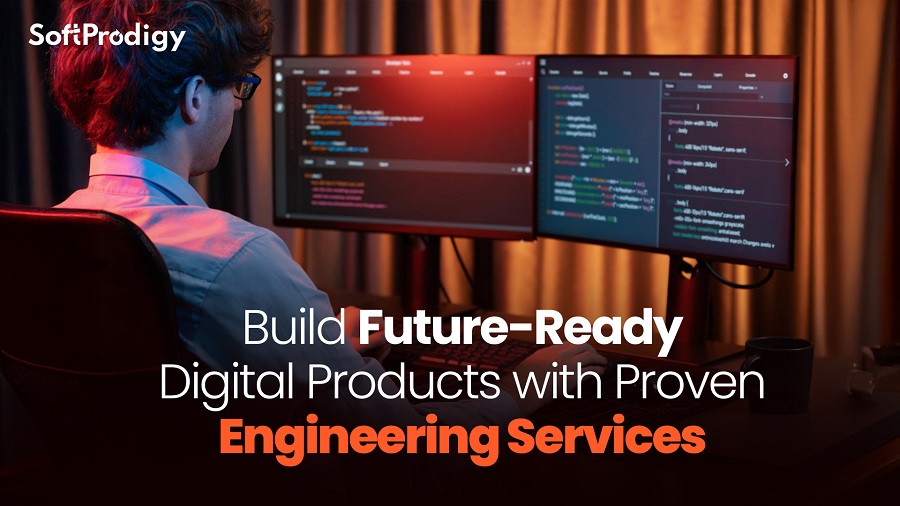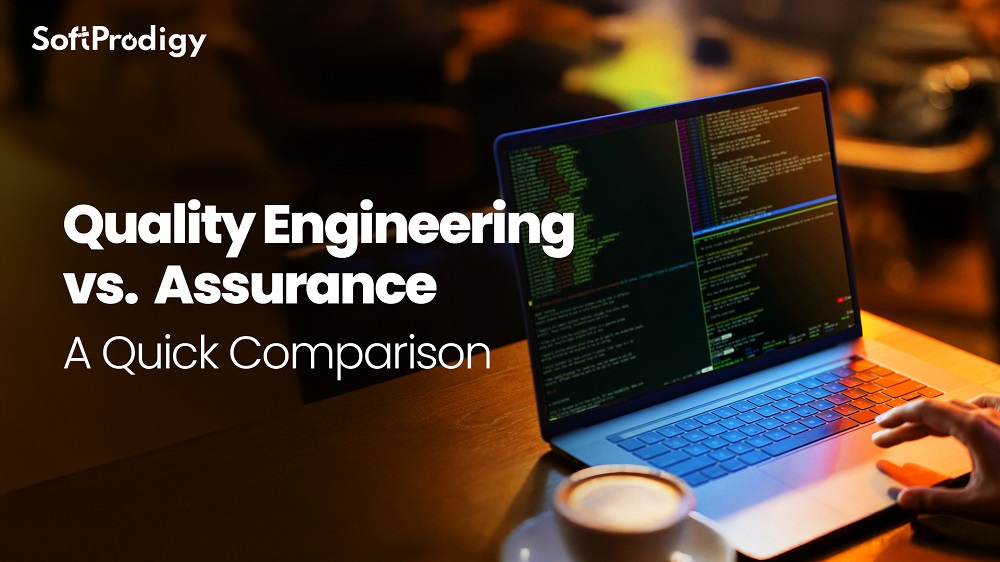Every great product you love has one secret ingredient and engineering brilliance. Whether it’s Netflix, Tesla or your favorite productivity app, their success isn’t luck. It is the result of engineering precision and consistent innovation. It is exactly where digital product engineering Services step in.
As technology evolves and users expect more, continuous innovation is essential. According to industry forecasts, the digital product engineering market is set to experience explosive growth through 2030, driven by AI, automation, IoT and sustainable practices.
Get ahead, and you don’t just keep up. You set the bar.
Here’s a snapshot of what’s reshaping digital product engineering and how you can ride the wave rather than get pulled under.
What Are Digital Product Engineering Services?
Digital product engineering services represent the complete spectrum of activities needed to bring digital products alive.
It’s not just about development or design but the strategic fusion of technology and business. Think of it as the difference between building a website and engineering a digital ecosystem.
The evolution from traditional software development to product engineering has been nothing short of transformative. Earlier, teams worked in isolated silos where designers never spoke with backend developers regularly. Engineering teams rarely consulted with product managers until the very last deployment phase, unfortunately. Today’s digital product engineering tears down those walls and creates collaborative innovation ecosystems instead.
The Evolution of Product Engineering
Back in the early 2000s, “product development” was about writing code and shipping software. Today, the world has moved to digital product engineering. A blend of hardware, software, AI, and IoT working together. It’s no longer about building a product; it’s about engineering an experience.
Modern engineering brings design thinking, automation, data-driven decisions and sustainability into one framework. This holistic approach ensures products do not just work.
Core Pillars of Digital Product Engineering Services
Modern digital product engineering services rest on four fundamental pillars that work in harmony:
- Digital Software Engineering breathes intelligence into products through elegant code and cloud-native architectures thoroughly. Developers create applications that scale seamlessly while maintaining security and delivering exceptional user experiences.
- Cloud & Infrastructure Engineering powers digital products with elastic computing resources and global reach. Engineers design systems that handle traffic spikes automatically while optimizing costs through intelligent resource allocation.
- Data & AI Engineering transforms raw information into intelligent features that personalize every user interaction. Machine learning models predict behaviors while analytics platforms reveal insights that drive product improvements.
- Experience Engineering ensures digital products feel intuitive and delightful across every touchpoint consistently. UX designers craft interfaces that reduce friction, while product managers validate features that solve real problems.
Types of Digital Product Engineering Services Companies Actually Offer
Understanding the service landscape helps businesses identify exactly what they need for digital success:
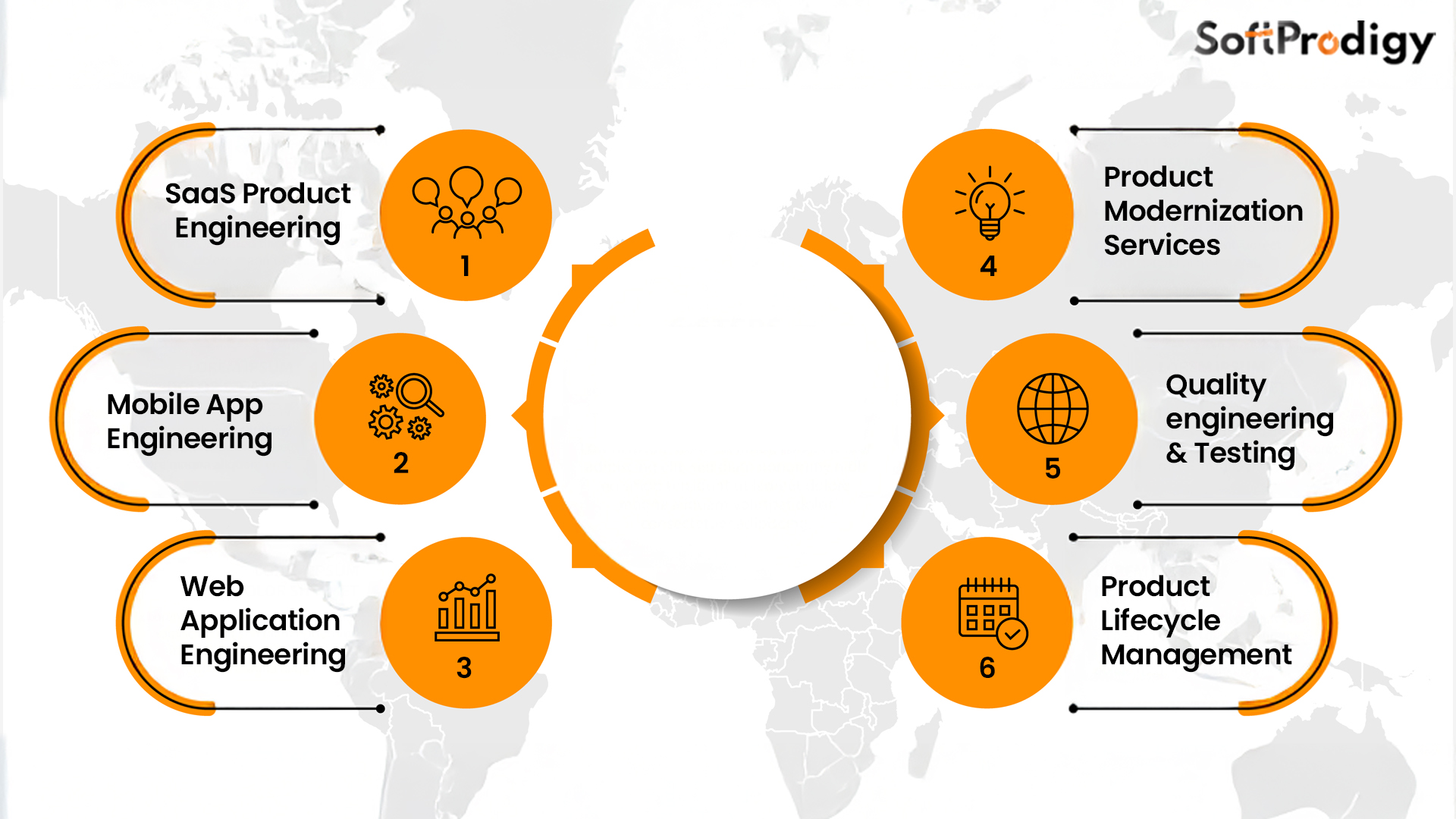
- SaaS Product Engineering powers the subscription platforms and cloud applications businesses depend on daily. Teams build multi-tenant architectures that serve thousands of customers from a single efficient codebase. Full-stack development services create seamless experiences from frontend interfaces to backend microservices and database layers.
- Mobile App Engineering creates native and cross-platform applications that feel perfect on every device. Engineers optimize performance for mobile networks while implementing offline capabilities that work without connectivity.
- Web Application Engineering develops responsive progressive web apps that rival native application experiences entirely. Teams leverage modern frameworks to build fast, interactive interfaces that engage users immediately.
- Product Modernization Services rescue legacy digital products from technological obsolescence through strategic cloud migrations. Companies transform monolithic applications into flexible cloud-native architectures that scale better than imagined.
- Quality Engineering & Testing ensures digital products work flawlessly before reaching your customers’ screens worldwide. Quality assurance teams automate testing across devices and scenarios, catching bugs before users experience them.
- Product Lifecycle Management orchestrates every phase from initial concept through continuous improvement and evolution. Digital platforms track user feedback and analytics and feature requests enabling data-driven product decisions.
The Digital Product Engineering Lifecycle
Building a digital product isn’t a single sprint. It’s an ongoing marathon of creativity, validation and improvement.
A successful product follows a structured digital product engineering framework — one that combines design thinking, agile execution and continuous optimization.
This framework ensures that innovation stays consistent across every phase of digital product development, from ideation to deployment.
The rise of the digital product engineering market has made this framework more relevant than ever. As businesses worldwide adopt digital-first strategies, the demand for end-to-end product engineering solutions continues to surge.
Here’s how the digital product engineering lifecycle works:
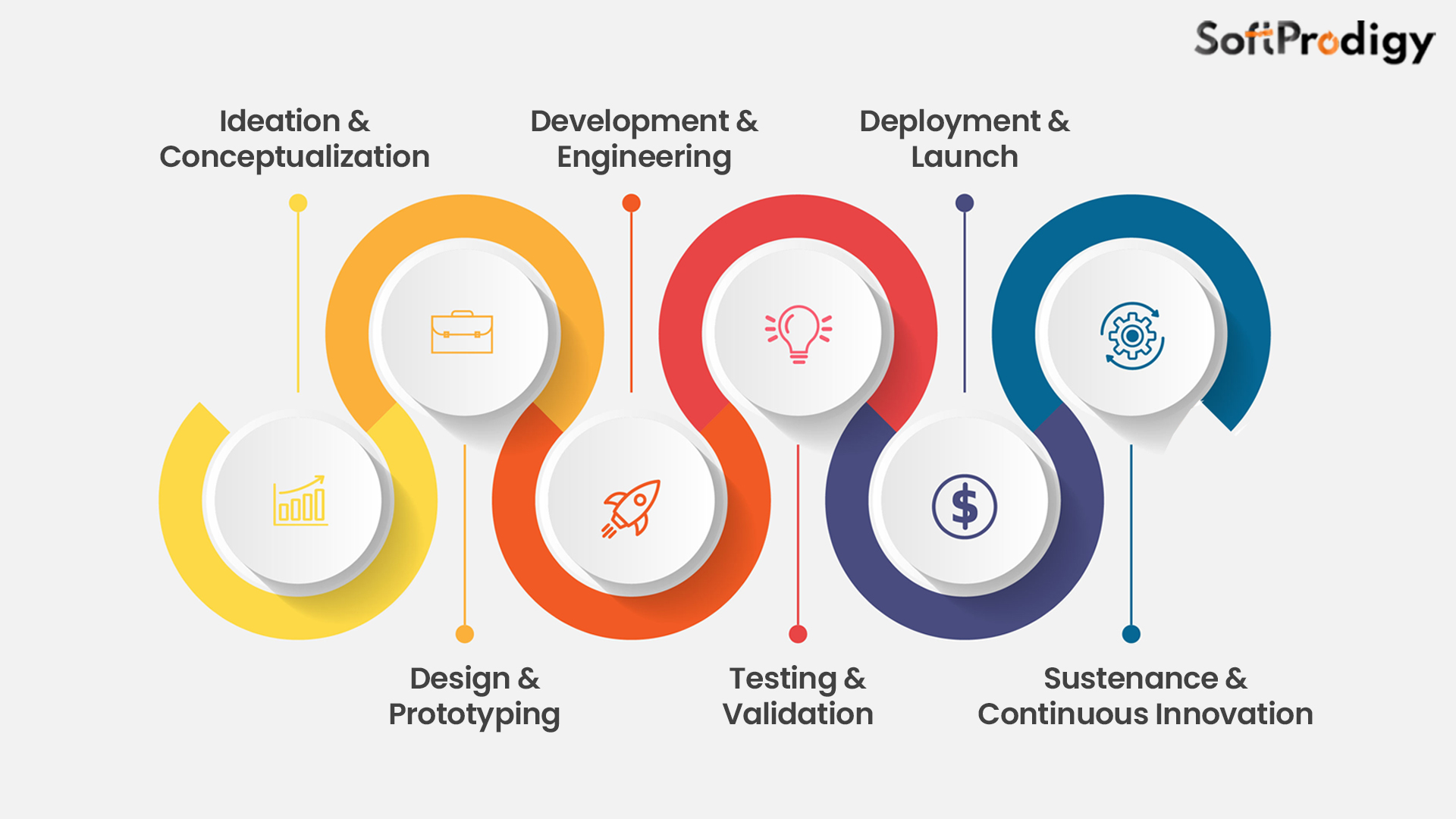
1. Ideation and Conceptualization
This is where creativity meets feasibility. Teams brainstorm, research, and evaluate if the idea solves a genuine problem. Market gaps, audience pain points and emerging tech trends are mapped out. At this stage, tools like AI-driven research and customer feedback loops help refine the product vision.
2. Design and Prototyping
Think of this as sketching your dream before building it. UX and UI designers craft wireframes and interactive prototypes that capture how users will experience the product.
This phase isn’t just about aesthetics; It’s about empathy and understanding what users truly need. A well-crafted prototype saves countless hours in development because it lets you test assumptions before writing a single line of code.
3. Development and Engineering
Now comes the magic. Developers bring the prototype to life using modern technologies, cloud platforms and APIs.
Product engineering emphasizes modularity, scalability and security. Whether it’s a SaaS platform or an IoT-enabled product, the focus is on building systems that adapt and scale. SoftProdigy’s Agile Product Development Services ensure flexibility during this phase. Teams iterate fast, test often and align with changing business needs.
4. Testing and Validation
No one wants bugs ruining a great idea. Rigorous testing ensures your product performs flawlessly under real-world conditions.
From functional and usability tests to performance and security checks, validation keeps your product reliable and secure. We integrate QA automation early in the process, ensuring every build meets enterprise-grade quality standards.
5. Deployment and Launch
After testing comes the big moment: getting your product into the hands of users. Deployment today is faster and smarter thanks to DevOps pipelines, cloud hosting and continuous integration.
We often guide clients through multi-environment rollouts, ensuring minimal downtime and maximum stability.
6. Sustenance and Continuous Innovation
Product engineering doesn’t stop at launch. Sustenance means refining, updating and improving based on user data.
Continuous engineering ensures your product evolves with changing technology and customer expectations. Product Maintenance and Support Services focus on ongoing optimization, keeping products ahead of the competition.
Why Digital Product Engineering Services Matter More Than You Think?
The difference between surviving and thriving in 2025 is digital agility.
Companies that engineer digital products outperform those that rely on legacy development. Here’s why:
1. Reducing Time-to-Market
Speed is the new currency of business. A digital product engineering company uses agile development practices to cut delivery timelines by nearly half. Instead of waiting months for a fully finished product, teams launch minimum viable products (MVPs) within weeks. This approach allows businesses to collect user feedback early, improve rapidly and start generating revenue sooner.
Traditional development often gets stuck in endless planning. With custom digital product engineering solutions, companies can move from concept to customer at record speed — staying one step ahead of competitors.
2. Enhancing Scalability
Growth is great until your systems can’t handle it. That’s why digital product development engineering solutions focus on scalable architectures that grow seamlessly with user demand. By leveraging cloud-native infrastructure and modular microservices, products can handle ten users or ten million without hiccups.
This prevents the performance bottlenecks and downtime that can damage user trust. Simply put, scalability is no longer a nice-to-have; it’s engineered into the DNA of successful digital products from day one.
3. Driving Practical Innovation
Innovation thrives when teams experiment quickly and learn even faster. Custom product engineering services empower organizations to use AI, machine learning and automation to identify user needs and test ideas in real time.
Rather than guessing what users want, these data-driven cycles ensure that every new feature solves a real problem. This creates meaningful innovation — not noise.
4. Achieving Cost Efficiency
Building smarter, not bigger and saves money. A skilled digital product engineering company reduces development costs by up to 40% through automation, resource optimization and reusable components.
Cloud infrastructure ensures you pay only for what you use, while automated testing cuts manual overhead. That efficiency frees up time and budget to focus on what truly matters: innovation and customer value.
5. Delivering Measurable Business Impact
Businesses that invest in digital product development engineering solutions see real, measurable results. Faster launches mean faster profits, while better-built products lower maintenance and support costs.
Higher-quality experiences lead to happier customers, better app ratings and stronger brand loyalty, creating a ripple effect that boosts long-term growth.
6. Navigating Compliance with Confidence
In regulated industries, compliance isn’t optional; it’s critical. Modern digital product engineering companies bake GDPR, HIPAA and PCI DSS compliance directly into their development frameworks. By integrating encryption, access controls and transparent audit trails from the start, businesses avoid costly penalties and protect user trust.
Security and compliance, when engineered early, become assets, not obstacles.
Digital Product Engineering vs. Traditional Product Development
Let’s clear the air first, digital product engineering and traditional product development aren’t the same game. Traditional product development focuses on building software. Digital product engineering focuses on evolving experiences.
The difference lies in speed, scalability and intelligence. Let us walk you through it:
| Criteria | Traditional Product Development | Digital Product Engineering |
|---|---|---|
| Approach | Linear, fixed scope | Agile, iterative, adaptive |
| Technology Stack | Legacy tools and frameworks | Cloud, AI, IoT, microservices |
| Focus | Functionality | Experience, scalability, and innovation |
| Delivery Model | Waterfall or static phases | Continuous delivery and integration |
| Goal | Launch a product | Build a living, learning digital ecosystem |
Why the Engineering Mindset Builds Future-Proof Digital Products?
Engineering mindsets focus on building systems that adapt to changing requirements without requiring complete rebuilds. Developers write modular code that allows easy replacement of components as technologies evolve rapidly. This flexibility prevents the technical debt that makes product development increasingly expensive over time.
Product engineers think holistically about user experiences and system architectures and long-term business objectives together. They consider scalability and maintainability and extensibility from the very first line of code written. This foresight creates products that remain competitive as markets and technologies transform at incredible speeds.
The Engine Behind Modern Digital Product Engineering
Every successful digital product isn’t built on code alone — it’s built on intelligence, collaboration and adaptability. What sets a great digital product engineering company apart isn’t just technical know-how, but the ability to combine innovation with precision.
Here’s what really fuels next-generation digital product success:
1. Cloud-First Foundations
Modern products live in the cloud, where agility, scalability, and resilience come standard. By adopting cloud-native architectures, businesses can deploy globally, scale automatically and update features without disruption.
This approach makes digital experiences faster, more reliable and always available. With custom digital product engineering solutions, the cloud becomes the foundation for faster releases, lower operational costs, and continuous innovation.
2. Intelligence Everywhere
Artificial intelligence and data analytics now form the brain of every digital product. They personalize user experiences, predict customer behavior, and support smarter business decisions in real time.
AI-driven systems continuously learn and adapt. This difference separates a basic application from an intelligent digital product built through digital product development engineering solutions.
3. Automation as a Culture
Speed and consistency are essential in today’s market. Automation ensures that development, testing and deployment happen smoothly without manual errors. When combined with DevOps practices, it creates a continuous delivery pipeline that turns ideas into functional products faster than ever.
4. Data-Driven Evolution
Every interaction creates data that holds valuable insights. Analytics transforms those insights into smarter decisions, revealing what works, what needs improvement and what the next opportunity looks like. By embedding analytics at every stage, companies can refine and evolve their products continuously.
5. Experience at the Core
Technology alone cannot win users; great design and experience do. Modern digital product engineering companies prioritize user experience through thoughtful design, accessibility and behavior-driven interfaces. A product that feels effortless earns lasting loyalty.
Common Pitfalls in Digital Product Engineering (and How to Avoid Them)
Even the best teams stumble when engineering digital products. The good news? You can avoid most mistakes with the right approach.
Here are common traps businesses fall into:
- Treating Engineering as Outsourcing: Digital product engineering needs collaboration, not handoffs. Align business and tech teams continuously.
- Ignoring UX and Design Early: Poor UX ruins great code. Involve designers early to create intuitive, lovable products.
- Building Without a Business Strategy: Every feature should serve a goal. Let business strategy guide technical decisions always.
- Treating Launch as the Finish Line: Launch is the start, not the end. Keep iterating, improving, and innovating continuously.
- Skipping Security Until It’s Too Late: Build security from day one. Prevention is always cheaper than post-breach damage control.
- Ignoring Scalability from the Start: Plan for growth early. Scalable architecture prevents crashes when user demand skyrockets.
- Underestimating Testing and QA: Automate testing to ensure quality. Catch bugs early and protect brand reputation.
- Ignoring Compliance and Regulations: Integrate compliance into design. Avoid penalties by meeting industry regulations proactively.
- Letting Tech Debt Pile Up: Fix shortcuts early. Manage technical debt before it slows innovation and progress.
Real-World Case Study: SmartLi — Powering Innovation Through Digital Product Engineering
Let’s make this real. Nothing explains digital product engineering better than a success story crafted by our own team at SoftProdigy.
SmartLi — A Digital Product Engineering Triumph
SmartLi is a next-generation digital product that redefines how businesses manage and monitor lithium battery systems. The challenge was to build a platform that could handle real-time data, ensure system reliability, and scale effortlessly for enterprise use.
SoftProdigy stepped in with a custom digital product engineering framework designed around cloud-native development, IoT integration, and advanced analytics. Our engineers built SmartLi from the ground up transforming an ambitious idea into a fully functional, market-ready solution.
The process followed every stage of digital product development, from ideation and prototyping to deployment and continuous optimization. Leveraging AI-powered insights, automation pipelines, and a microservices architecture, we created a product that’s smart, scalable, and future-ready.
Key Highlights
This project is a clear reflection of how Digital Product Engineering Services can bridge innovation and functionality. SmartLi isn’t just a product. It’s proof that with the right engineering mindset, ideas can become intelligent digital ecosystems.
- End-to-End Product Development: From concept to execution, SmartLi evolved through the full digital product engineering lifecycle.
- Cloud Integration: Hosted on secure, scalable cloud infrastructure for real-time monitoring and performance optimization.
- IoT Empowerment: Seamless data flow between hardware and software for precise system intelligence.
- Data-Driven Innovation: Analytics dashboards delivering actionable insights for decision-making and operational efficiency.
Continuous Evolution: SmartLi is built to adapt to market needs, aligning perfectly with the growing digital product engineering market.
The Future of Digital Product Engineering
The world of digital product engineering is evolving faster than ever. As technology advances, user expectations are rising too and making continuous innovation the new standard.
The global market for digital product engineering is expected to grow rapidly through 2030, fueled by AI, automation, IoT, and sustainability.
Companies that adapt early won’t just survive; they’ll set the pace for the next decade of digital innovation.
Let’s explore what’s shaping the future.
1. AI-Driven Product Design and Predictive Engineering
Artificial Intelligence is redefining how digital products are imagined, built, and improved. Think of apps that optimize themselves or systems that detect issues before they occur.
With predictive analytics, companies can fix problems before users even notice them reducing downtime and improving reliability. The result is smarter, faster, and more resilient digital ecosystems that evolve on their own.
2. The Rise of Digital Twins:
Digital twins are virtual replicas of real products, and they’re changing the way teams test and build.
By simulating real-world performance, digital twins help businesses spot issues early, refine designs faster, and reduce costly rework.
In product engineering, this means testing every scenario virtually before a product ever hits the market, saving both time and money.
3. Sustainable and Green Engineering:
Sustainability is no longer optional; it’s essential. Future-ready digital products will focus on energy efficiency, minimal waste, and responsible cloud usage.
From optimizing servers to reducing data center energy consumption, green product engineering will define how brands show accountability in the digital era.
Building smarter, sustainable systems doesn’t just protect the planet — it enhances long-term business performance.
4. Low-Code and No-Code Innovation:
Low-code and no-code platforms are revolutionizing how products are created. They empower non-technical teams to contribute, speed up development, and reduce dependency on large engineering teams.
When used within a solid product engineering framework, these tools cut time-to-market and accelerate innovation, allowing companies to experiment and launch faster than ever.
4. Continuous Intelligence and Edge Computing:
The next frontier of digital product engineering is all about real-time intelligence. Edge computing allows data to be processed closer to where it’s generated, delivering lightning-fast performance and instant decision-making.
From smart factories to immersive AR/VR applications, this approach ensures low latency, high efficiency, and better user experiences.
How Businesses Can Get Started with Digital Product Engineering?
Adopting digital product engineering isn’t about overhauling your tech overnight. It’s about building a sustainable, scalable path to digital innovation.
Here’s a roadmap for organizations looking to start strong:
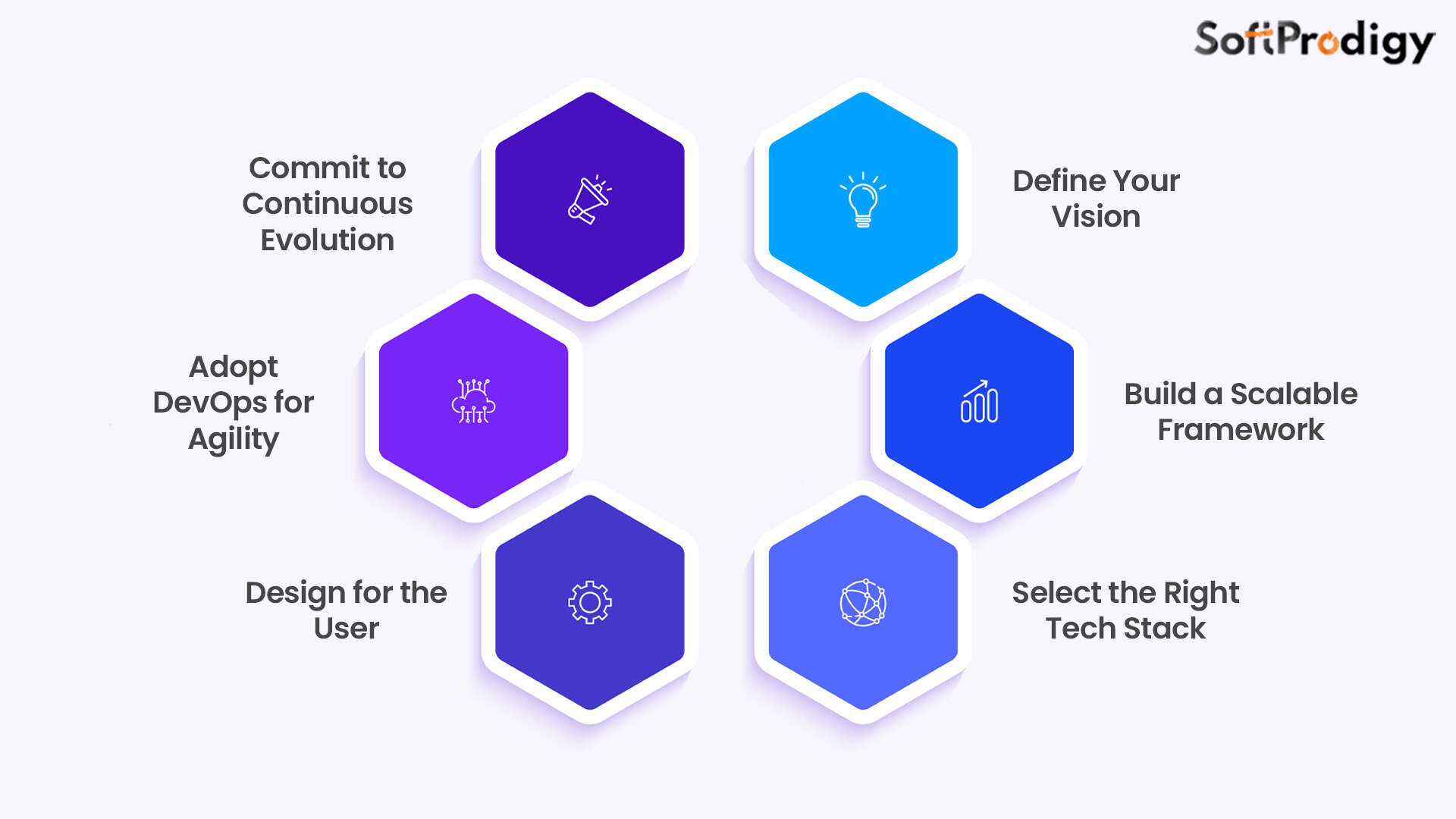
Step 1: Define a Clear Vision
Before you dive into technology, define your business goals. Ask: What problem are we solving, and how does digital engineering make it better?
SoftProdigy helps companies identify digital opportunities through IT Consulting Services that align tech investments with strategic outcomes.
Step 2: Establish a Scalable Framework
A successful journey starts with a solid digital product engineering framework. This includes processes for ideation, design, prototyping, testing, deployment, and continuous improvement.
The framework ensures all teams, from developers to designers. To stay aligned with the end vision.
Step 3: Choose the Right Tech Stack
The foundation of every great digital product is its technology stack. Choose cloud-native platforms, scalable databases, and AI-driven analytics tools to future-proof your solution.
Step 4: Focus on User-Centric Design
Users define success. A beautiful interface is great, but usability and accessibility drive adoption.
Incorporate feedback loops early and continuously iterate designs based on real-world data. Learn how we combine creativity and functionality in our UI/UX Design Services.
Step 5: Implement DevOps for Speed and Agility
DevOps culture bridges the gap between development and deployment. It ensures your product evolves continuously without compromising stability.
SoftProdigy integrates automation pipelines and continuous delivery systems to achieve rapid iteration without downtime.
Step 6: Invest in Long-Term Maintenance and Evolution
Your digital product shouldn’t just launch and stop there. It should evolve — adapt to new technologies, user feedback, and market trends. The SmartLi case study is proof of how continuous optimization drives lasting impact.
SmartLi evolved through every phase of digital product engineering, remaining adaptable, scalable, and relevant in the dynamic digital product engineering market.
Actionable Takeaways for Business Leaders
Here’s your quick cheat sheet to succeed in the digital product engineering era:
| Priority | Action | Benefit |
|---|---|---|
| Adopt Digital-First Thinking | Transition from traditional dev to continuous engineering | Faster innovation, stronger differentiation |
| Embrace Cloud & AI | Use smart automation and scalable architecture | Efficiency and flexibility |
| Invest in UX Research | Design around user needs, not assumptions | Higher retention and engagement |
| Build a Feedback Loop | Gather user data post-launch | Continuous improvement and personalization |
| Partner with Experts | Work with a team that understands both business and tech | Reduced risk and faster ROI |
Wrapping It Up,
We’ve entered an era where digital products aren’t just tools, they’re living ecosystems. They grow, learn and evolve with their users. That’s the essence of digital product engineering services, building smart, sustainable, and scalable solutions that bridge imagination with innovation.
At SoftProdigy, we don’t just develop software. We help brands engineer the future with strategy, creativity, and technology that truly connect.
If you’re ready to bring your next big idea to life, it’s time to think beyond development — it’s time to engineer it digitally.
Divya Chakraborty is the COO and Director at SoftProdigy, driving digital transformation with AI and Agile. She partners with AWS and Azure, empowers teams, and champions innovation for business growth.

